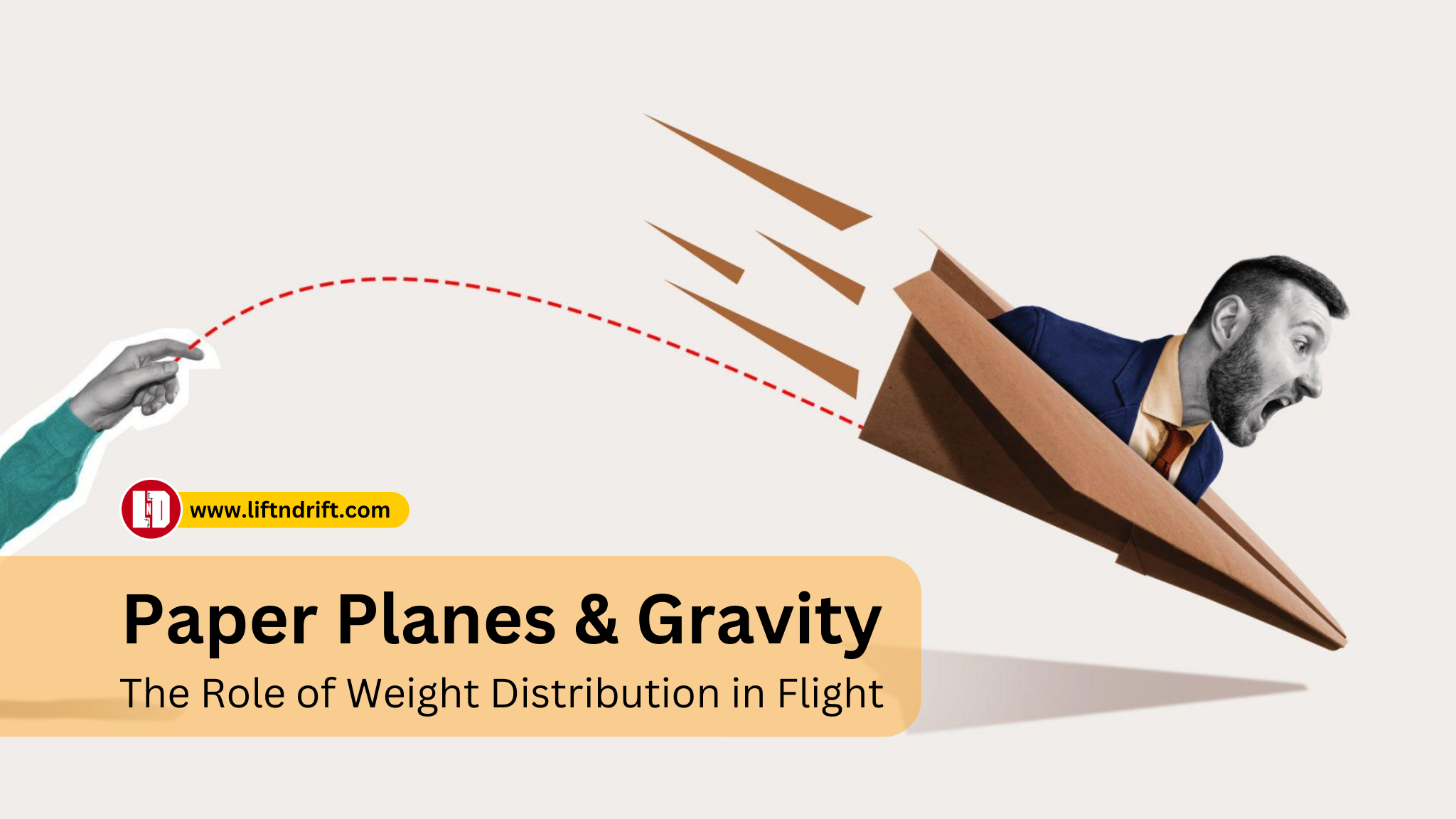Welcome, aviation enthusiasts and paper plane aficionados, to a thrilling journey through the art and science of paper airplanes! In this blog post, we will explore the Paper airplane weight distribution, fascinating world of paper airplane designs and uncover the secrets of creating the best paper airplane that soars through the skies with grace and precision. So, grab your paper and let’s begin folding our way to airborne glory!

The Magic of Paper Airplanes
Who would have thought that a simple sheet of paper could defy gravity and glide through the air? Yet, these humble creations have captured the hearts of people young and old for generations. Whether you’re a seasoned pilot or a curious beginner, there’s always something mesmerizing about crafting and launching your very own paper airplane.
Taking Flight: How to Make a Paper Airplane
Before we dive into the specifics of weight distribution, let’s explore the foundational steps of creating a best paper airplane:
- Fold, Flip, and Turn: Begin by folding the paper carefully, following the instructions for your chosen design. You can find various tutorials online, but we recommend starting with this comprehensive guide on how to fold a paper airplane for beginners.
- Wings and Tails: The shape and size of the wings and tail greatly influence the flight pattern. Experiment with different designs to see which one suits your flying preferences.
- Balance is Key: Achieving the perfect balance in weight distribution is crucial for a stable flight. Let’s delve deeper into this important aspect.
Weight Distribution: The Art of Balance
A paper airplane’s flight pattern is directly affected by how its weight is distributed. Achieving the right balance will ensure that your paper airplane glides smoothly and gracefully through the air. Here are some tips to get it right:
- Center of Gravity: The center of gravity is the point on the paper airplane where all the weight is concentrated. For stable flight, the center of gravity should be slightly in front of the wings. This allows the plane to maintain its orientation and fly straighter.
- Adding Paper Clips: Adjusting weight distribution can be as simple as adding paper clips strategically. Placing paper clips near the nose or wings can fine-tune the balance and improve flight performance.
- Play with Folds: Experiment with folding techniques that shift the center of gravity. Slight adjustments can have a remarkable impact on flight behavior.
The Quest for the Best Paper Airplane
As the paper plane enthusiast in you grows, you might wonder, “Which design is the best paper airplane for distance?” Fear not, for we have curated a list of incredible paper airplane designs for you to try:
- The Nakamura Dart: Named after its creator, this design is renowned for its long-distance flights. Learn how to make the Nakamura Dart and conquer the skies!
- The Boomerang Paper Plane: Who said boomerangs are just for the Outback? This plane is a true boomerang, returning back to you in style. Unleash your inner aviator with this guide on how to make a boomerang paper plane.
- The Valkyrie: Channel the mythical valkyries as you launch this high-performance paper airplane. Make your own with this easy-to-follow Valkyrie paper airplane template.
Frequently Asked Questions (FAQs)
The current world record for the farthest flight by a paper airplane stands at an impressive 226 feet and 10 inches! Imagine the thrill of launching a paper plane that covers such a vast distance.
Absolutely! Paper airplanes are a fantastic way to spark children’s interest in aviation and science. Check out these kid-friendly paper airplane designs that will keep them entertained for hours.
If you’re new to paper folding and flying, fear not! We have the perfect design for you. Get started with the beginner-friendly paper airplane instructions that will have you soaring in no time.
Absolutely! While standard printer paper works well for most designs, you can experiment with various paper types to see how they affect flight performance. Thicker paper might add stability, while lighter paper could lead to longer flights.
Explore the treasure trove of paper airplane designs and templates at Liftndrift. Their extensive collection caters to all skill levels, ensuring there’s a perfect design for everyone.
Soar to New Heights!
As you embark on your paper airplane adventure, remember that the magic lies not only in the folds and creases but also in the understanding of weight distribution. Mastering this art will unlock a world of possibilities, allowing you to create paper airplanes that defy gravity and push the boundaries of flight.
Now, it’s time to grab some paper, unleash your creativity, and let your imagination soar! Who knows, maybe you’ll be the next record-breaker in the world of paper airplanes!
Happy flying!

